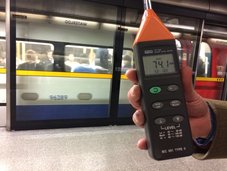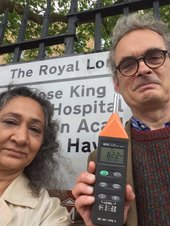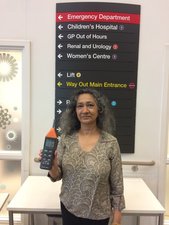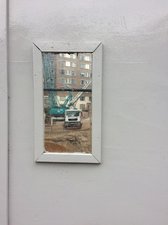Suggestions to control noise in Mumbai - comparison between noise sources in Mumbai and London5/23/2017 From: sumaira abdulali <sumairaabdulali@yahoo.com>
To: Chief Minister Office <cm@maharashtra.gov.in>; Maharashtra Chief Minister <chiefminister@maharashtra.gov.in> Cc: Chief Secretary <chiefsecretary@maharashtra.gov.in>; Environment Secretary <sec_env@maharashtra.gov.in>; Additional Chief Secretary-Home <acs_home@maharashtra.gov.in>; Mumbai CP 1 <police.mumbai@gmail.com>; Member Secretary MPCB <ms@mpcb.gov.in>; MUNICIPAL COMMISSIONER <mc@mcgm.gov.in> Sent: Tuesday, May 23, 2017 12:30 PM Subject: Please control Mumbai's noise pollution. World class cities like London, to which we sometimes aspire, do! 23rd May 2017 Hon’ble Chief Minister Shri Devendra Fadnavis, State of Maharashtra, Mantralaya, Mumbai. Hon’ble Chief Minister Shri Devendra Fadnavis, During a recent visit to London, I measured noise levels at various locations and compared them with noise levels in Mumbai. I measured noise near six central London hospitals, in two London residences, at construction sites and in trains including overground and underground trains and compared the findings with corresponding locations in Mumbai. A Report on noise levels outside six major London hospitals compared with noise levels outside six Mumbai hospitals is attached. The findings indicate that noise levels outside Mumbai hospitals are far more than outside London hospitals, although in both cities the hospitals are located on busy roads carrying large volumes of traffic. The major reason for the difference is honking in Mumbai. I also measured the decibel level of ambulances in London (94dB) and Mumbai and found the decibel level of ambulance sirens in London less than those in Mumbai (100dB.) Recommendations: The decibel levels of horns and Silencers of vehicles need to be checked while undergoing registration formalities and through enforcement drives. Drivers need training to drive without honking and enforcement of anti-honking rules needs priority. Honking near hospitals need special enforcement drives and we need to consider insulation of hospital premises. Ambulances too should consider lowering decibel level of sirens, particularly in light of the fact that Mumbai ambulances are not sound proofed, while critically ill patients requiring silence are treated within. Ambulances while transporting patients often act as mini hospitals and should aspire to the same level of silence as hospitals, which are Silence Zones. Residences in London and Mumbai: Even when situated on main roads , London residences are so quiet that they measure under 30dB in the daytime. The readings include a residence with double glazed windows which measured 29dB indoors and another one with ordinary single glass, which measured 35dB in the daytime. Again, although the roads carried traffic, the London residences were quieter than Mumbai due to the absence of honking on the streets. Mumbai residences measured during 51dB and 90dB in various seasons and depending on the sources of noise, including honking, loudspeakers etc. in their vicinity. Recommendations: Honking in Mumbai along with all types of noise including loudspeakers, firecrackers and other noise sources need to be restricted in Mumbai’s residential areas at all times. Construction sites: The noise from construction equipment was similar in London and Mumbai, with a maximum decibel level of 101.4dB while cutting stone in a London suburb and 89.7dB at a major building construction site. In London. However, I understand that timings that such work is permitted are very strictly regulated in London and I observed noise barriers around the London sites while no such barriers exist in Mumbai. Construction is permitted in Mumbai for much longer hours than in London. Recommendations: Timings for construction need to be restricted and an action plan to mandate noise barriers and restriction on types of construction activity permitted/not permitted in situ needs to be formulated and notified. Overground and Underground trains: The decibel level of trains in London and Mumbai were similar with maximum decibel levels on a London underground station measuring 74.1dB and inside a train measuring The overground trains too measured similar decibel levels. The trains in Mumbai were similar to those of London on both Western and Central Line suburban trains, but exceeded decibel levels by far when announcements were made upto 88dB, when brakes were not maintained and made a screeching sound upto 94dB and when horns were used upto 120dB. Recommendations: Maintenance of trains to restrict noise levels from faulty equipment/mechanics needs priority. Additional noise sources such as loudspeakers within trains and bhajan mandals need to be strictly regulated. Hon’ble Chief Minister, noise pollution is a serious environment pollutant adversely affecting the health of Mumbai residents. London is a major city comparable to Mumbai in many ways, and one which we often aspire to emulate. Noise levels have been controlled there by regulating timings of noisy work, ensuring that essential services and activities such as trains, construction and traffic do not create unnecessary noise. There are also strict laws governing timing and location of recreational events which do not permit many types of activities including loudspeaker use except in designated areas. In spite of this, London is considered a noisy city and residents of London complain about the adverse effects of noise pollution. The noise levels in Mumbai far exceed those in London due to lack of enforcement of laws and planning to control noise pollution, from traffic, construction and recreational use. Essential services such as trains also add to the noise pollution, making Mumbai one of the noisiest cities in the world. All of these noise sources could be reduced by effective political and administrative will, which would safeguard the health of crores of Mumbai residents. We request you to consider the harm caused by these high noise levels on the health of our citizens and residents of Mumbai and to take effective action to control decibel levels from all sources in Mumbai. Thank you and with regards. Sumaira Abdulali Awaaz Foundation 23rd May 2017 Noise levels in vicinity of Central London Hospitals compared with Mumbai hospitals. The noise levels in the vicinity of six Central London hospitals was measured on a typical working day in May 2017. All hospitals are located on busy roads with heavy level of traffic, Readings were taken on the street outside and in the entrance lobby. Maximum noise levels were noted over an elapse period of several minutes for each reading. The noise level on the outside ranged from 62 to 88 dB. Inside the lobby the range was 56 to 74 dB. Noise levels of passing ambulances with their sirens on were also measured; the highest was 94 dB. Hospital Noise level dB Outside Lobby UCH 83 56 St Mary’s 79 74 St Thomas’ 81 65 Guy’s 63 67 Royal London 82 71 London Clinic 88 67 Ambulance on road 94 Noise levels measured in the vicinity of six Mumbai Hospitals on a typical working day in May 2017 ranged from 95.1dB to 100.5 dB. Noise level of an ambulance in Mumbai was 100 dB, measured with the Maharashtra Pollution Control Board in 2014. Hospital Noise level outside dB Holy Family 97.4 Lilavati 95.1 Sion 97.3 KEM 100.3 Wadia 99.6 Hinduja 100.5 The highest noise levels in London and in Mumbai was from traffic on roads outside the hospitals. In London, the sound was mainly of vehicles without horns and the maximum levels was 88dB. In Mumbai, due to constant honking, even the site where the lowest level of 95.1dB was recorded was higher than the highest in London. Maximum recorded level was 100.5dB. The decibel level of the ambulance was also higher in Mumbai at 100dB compared to 94dB in London. Nigel Watts and Sumaira Abdulali Awaaz Foundation 17th May 2017 Sumaira Abdulali Convenor, AWAAZ Foundation 982 15 20805 awaazfoundation.org
0 Comments
Leave a Reply. |
AdvocacyFor better implementation of Noise Rules and strengthening of Noise Policy Archives
October 2021
Categories |
- Welcome
- Noise Pollution
- Sand Mining
-
Other Projects
- Climate Change >
- Air Pollution >
- Firecrackers >
- Stone quarrying or recycling debris >
- Alibag Solid Waste Management >
- Climate Change News
- Sawantwadi-Dodamarg Wildlife Corridor >
- MITRA (Movement against Intimidation, Threat and Violence against Activists) >
- Eco friendly Festivals >
- Light Pollution >
- Oil Spills >
- Coastal Road and Development Plan >
- Urban Trees >
- Anti Smoking >
- Miscellaneous News
-
#AWAAZFORACTION
- About







 RSS Feed
RSS Feed
